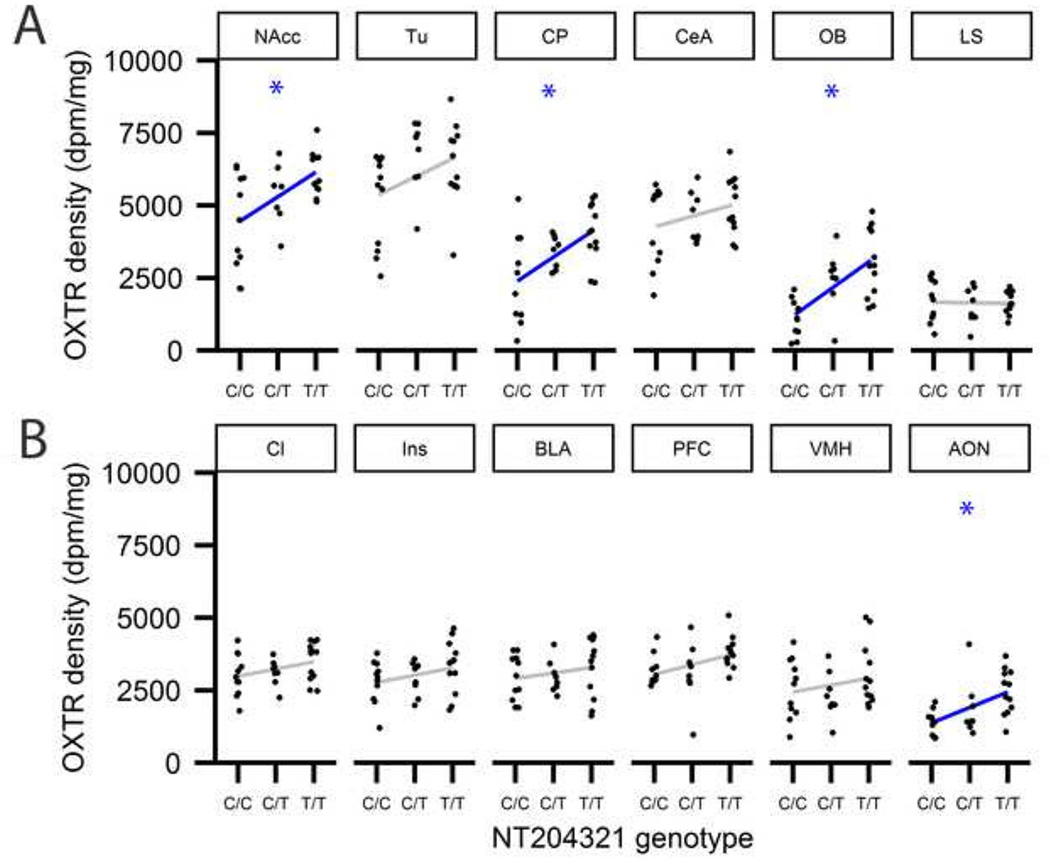Figure 2.
OXTR binding density in striatal and olfactory regions is associated with NT204321. Samples sizes for each genotype are C/C=11, C/T=8 and T/T=12. (a) Brain regions are sorted based on the how strongly the regions loaded on Factor 1. Within Factor 1 regions, OXTR binding is significantly related to genotype in NAcc, CP and OB. (b) Brain regions are sorted based on the how strongly the regions loaded on Factor 2. In the Factor 2 grouping, only the AON was significantly associated with genotype. Associations were investigated using simple linear regression. * P < 0.004 (α corrected for 12 comparisons). NAcc, nucleus accumbens; Tu, olfactory tubercle; CP, caudate putamen; CeA, central amygdala; OB, olfactory bulb; LS, dorsal lateral septum; Cl, claustrum; Ins, insular cortex; BLA, basal lateral amygdala; PFC, prefrontal cortex; VMH, ventral medial hypothalamus; AON, anterior olfactory nucleus. Data is shown as individual OXTR density (dpm/mg) with trend line for the linear regression.

